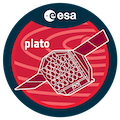Speaker
Description
Introduction: As more accurate Telescopes and missions are developed, the number of exoplanet detections keep increasing. The characterization of these planets and their statistical investigations are important steps to understand the formation of the planet and planetary system. Additionally metallicity plays a critical role in planet formation mechanisms. An updated version of the parameters for stars and planets from the NASA Exoplanet Archive is used to investigate the relationship between the planet radius and stellar metallicity of massive exoplanets orbiting around G-class stars. Here, we concentrate on planets with radii greater than 6 R⊕(earth radius), that appear to suggest a probable inverse relationship between radius and Staller metallicity. With declining metallicity and rising planet size, this correlation steepens. Moreover in the case of multiple star system the slope steepens more. Though it has relatively small data points around 95, It contains both low R-squired value(0.07) and low P-value(0.006). Till now the calculation of uncertainty values and the effect of other parameters like density, age, temperature are being analyzed. We separated the values for radial velocity method and transit method of The planet detection. In the case of redial velocity the slope value and p value are respectively -2.19 and 0.028. interestingly in this case, there are just one data with uncertainty value among 65 data points. observed inverse exponential relation may not be fully explained by observational biases alone. More accurate data will be needed for further confirmation.

